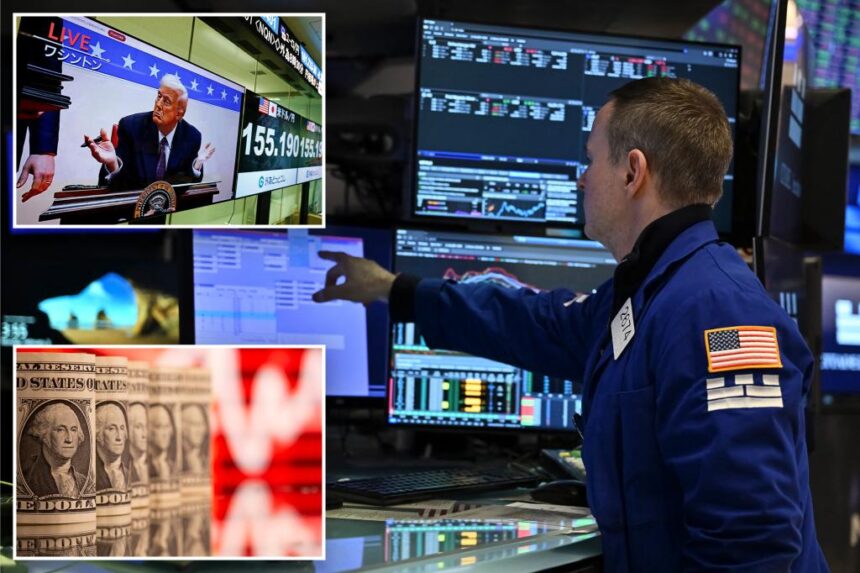Corporate treasurers are taking proactive steps to shield company earnings from the impact of a strengthening dollar. This shift in strategy reflects a growing belief among analysts that President Donald Trump’s tariff policies will contribute to a sustained period of dollar strength.
The US dollar index has climbed approximately 7% above its September lows, reaching a two-year high in January. Investors are bullish on the dollar due to robust US economic growth and Trump’s protectionist trade agenda. Speculative trading has driven net long positions on the dollar to nearly $35 billion, the highest level in almost nine years.
Corporate treasurers, who traditionally employ forward contracts, currency options, and swaps to mitigate currency risks, are now showing increased urgency in protecting against further dollar appreciation. Companies with significant overseas revenue streams are particularly vulnerable to currency fluctuations and are ramping up hedging activities to safeguard their cash flow.
Multinational corporations like Apple and Microsoft have already cautioned about the negative impact of a strong dollar on their financial performance. The surge in hedging activity among companies across various industries is a response to the heightened volatility in currency markets following Trump’s election victory and the subsequent dollar rally.
The uncertainty surrounding Trump’s tariff policies has added to the complexity of managing currency risks. Companies are bracing for prolonged dollar strength as the tariffs take effect. The recent market turbulence triggered by threats of tariffs on Mexico, Canada, and China has reinforced the need for robust hedging strategies to navigate the evolving landscape.
Despite the benefits of a strong dollar for the US economy, companies face challenges in converting foreign profits into dollars and maintaining competitiveness in global markets. Businesses are increasingly focused on protecting their bottom line from adverse currency movements and unpredictable policy changes.
Apple, Johnson & Johnson, and Microsoft have all cited the stronger dollar as a factor affecting their revenue projections. Smaller companies with limited resources for hedging face greater exposure to currency risks. These businesses must adopt sound hedging practices to adapt to the new normal of a buoyant dollar.
As trade tensions escalate, companies will face greater uncertainty in forecasting business activity and implementing effective hedges. The risk of an all-out trade war could further complicate hedging efforts and disrupt cash flow projections. It’s crucial for businesses to stay agile and responsive to changing market dynamics to mitigate the impact of currency fluctuations on their financial health.








